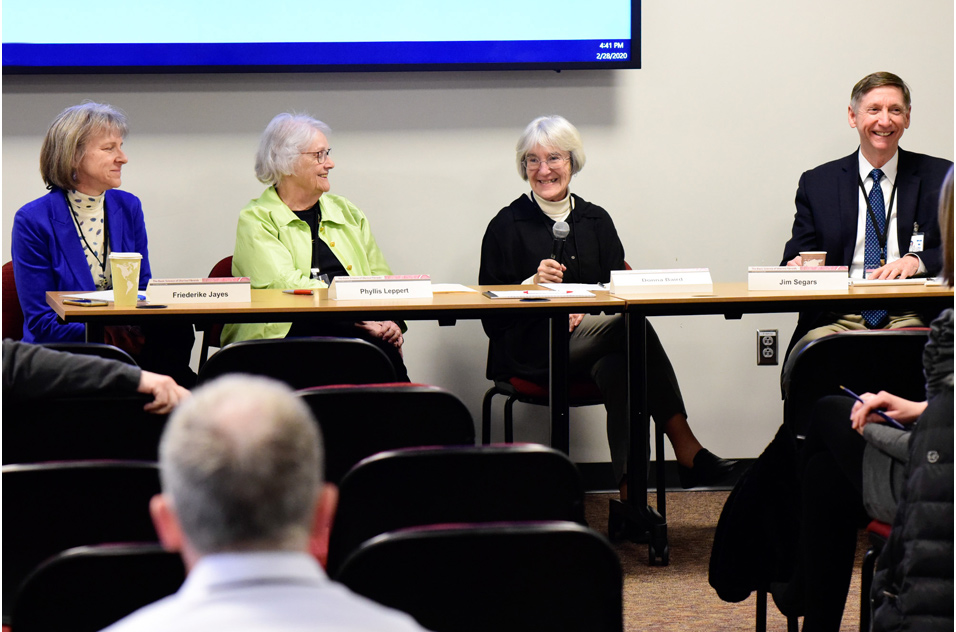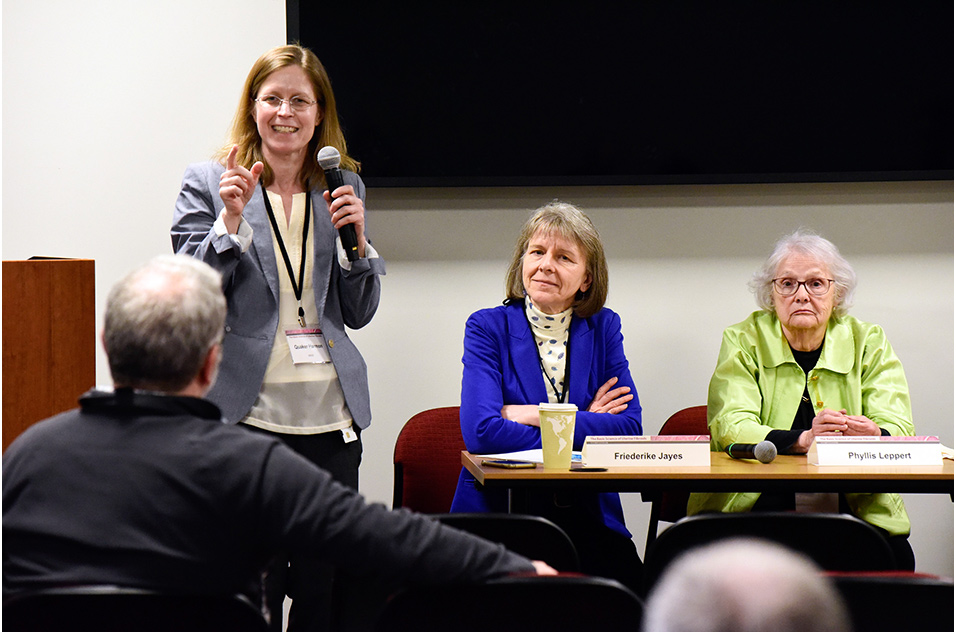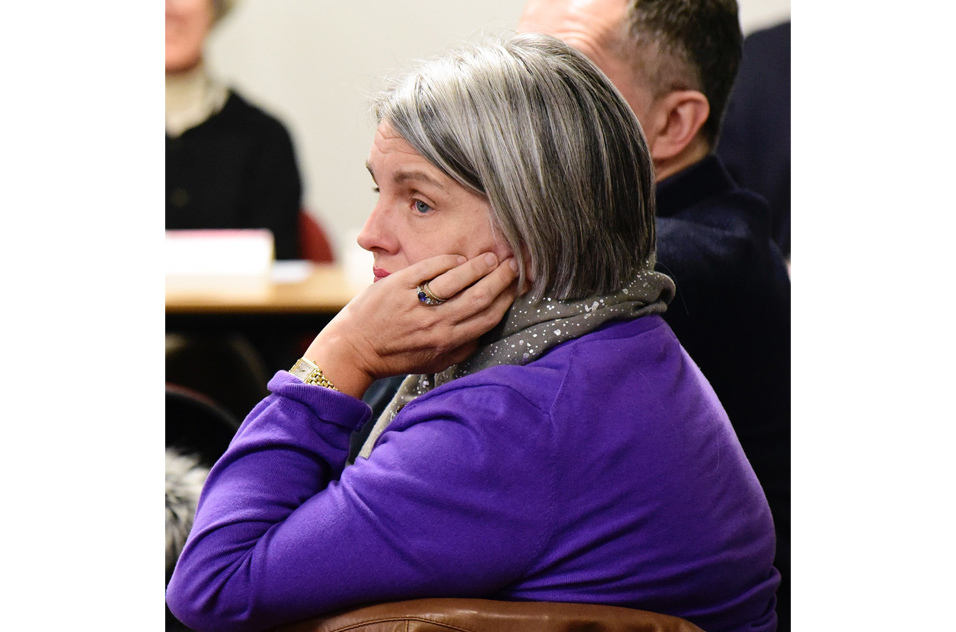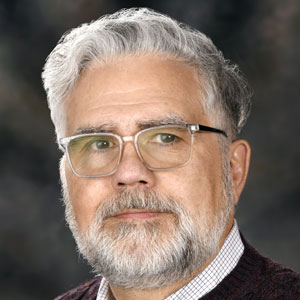The basic science of uterine fibroids — benign tumors that grow in the uterus and cause an array of health problems — drew researchers from as far away as Spain to a scientific symposium Feb. 28 at NIEHS. Topics ranged from molecular techniques for mapping uterine fibroid cells to the use of green tea extract as a potential treatment.
“I was blown away by all the new information and the details of the underlying biology of fibroids, which was so different from what we knew ten years ago,” said NIEHS reproductive epidemiologist Donna Baird, Ph.D., who served as a program committee member.
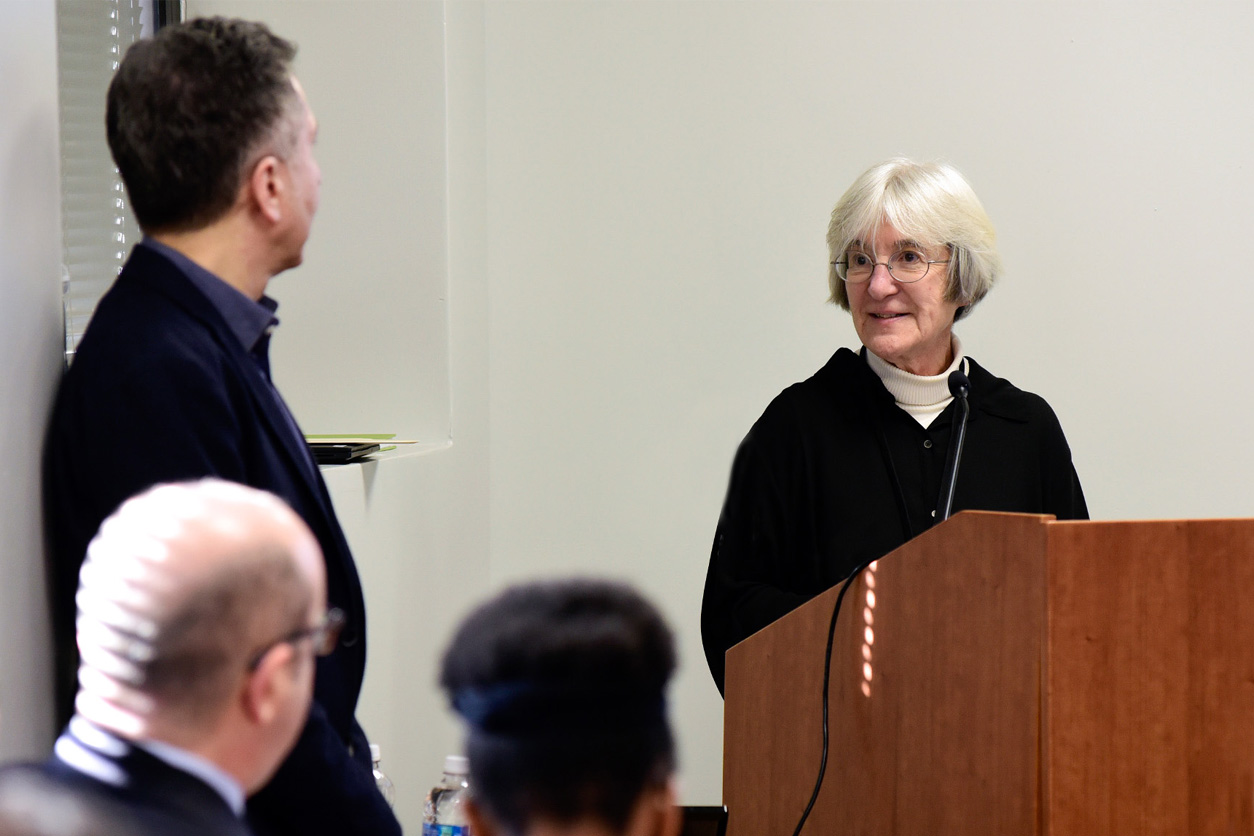 Baird, right, introduced Bulun, who described how he uses bioinformatics and genomics to uncover ways to develop more effective therapies against uterine fibroids. (Photo courtesy of Steve McCaw)
Baird, right, introduced Bulun, who described how he uses bioinformatics and genomics to uncover ways to develop more effective therapies against uterine fibroids. (Photo courtesy of Steve McCaw)The event featured two distinguished lectures, 12 talks, and oral presentations and posters by early-career investigators. Organizers also provided time for networking and forging new collaborations.
“This is a scientific community that's been somewhat fragmented,” said Phyllis Leppert, M.D., Ph.D., co-founder of the Campion Fund, which sponsored the conference alongside NIEHS. “We've made tremendous progress, but there's so much more to do.”
Gynecology’s Holy Grail
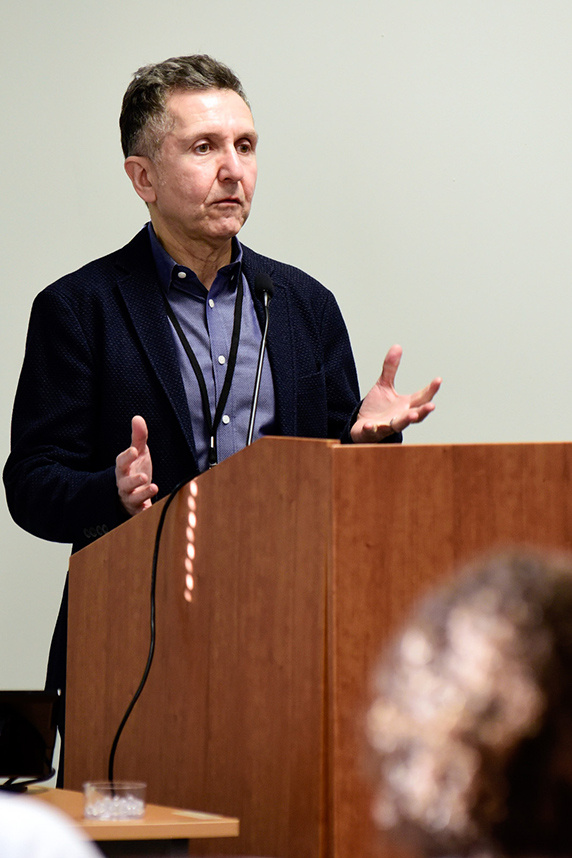 Bulun explained that fibroids will grow or shrink in response to shifts in estrogen and progesterone levels. (Photo courtesy of Steve McCaw)
Bulun explained that fibroids will grow or shrink in response to shifts in estrogen and progesterone levels. (Photo courtesy of Steve McCaw)More than 70% of women develop uterine fibroids, according to plenary speaker Serdar Bulun, M.D., a reproductive endocrinologist at Northwestern University. About half of these women are likely to experience symptoms such as heavy menstrual bleeding, pelvic pain, or pregnancy problems, which often result in surgery.
“Uterine fibroids and endometriosis are the Holy Grails of gynecology because they are responsible for the majority of hysterectomies,” he said.
Each uterine fibroid seems to originate from a single stem cell, which morphs into a benign tumor in the lining of the uterus, according to Bulun. Therapies that block the production of the hormones estrogen and progesterone can shrink these uterine fibroids. But after the therapies stop, fibroid development continues, presumably because the stem cells that give rise to them remain.
Bulun presented unpublished research suggesting treatments aimed at depleting these stem cells might enable scientists to get rid of uterine fibroids for good.
Trigger warnings
Despite decades of research, scientists still do not know the exact event that triggers a single stem cell to turn into a uterine fibroid. Darlene Dixon, D.V.M., Ph.D., head of the Molecular Pathogenesis Group in the NIEHS Division of the National Toxicology Program (NTP), thinks that is one of the most fascinating questions in the field.
Dixon presented the results of an ambitious study she undertook with her longtime NTP collaborator, the late Gordon Flake, M.D. The researchers examined 2,151 microscope slides taken from 460 uterine fibroids. They found that the cells grew from tiny seedlings to masses of fibrous tissue in four stages, which Dixon called the Flake fibroid phases.
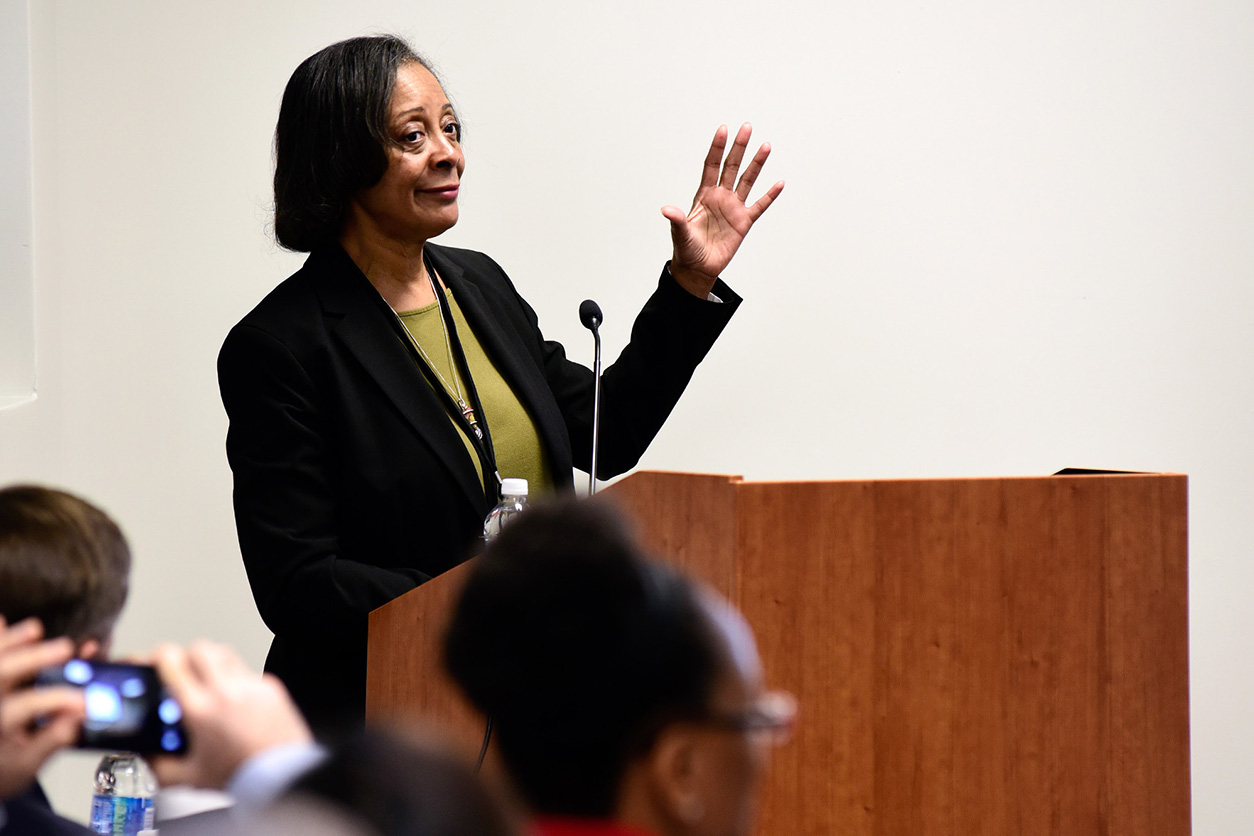 Dixon showed the audience what uterine fibroids looked like under the microscope, including tumors in each of the four Flake fibroid phases. (Photo courtesy of Steve McCaw)
Dixon showed the audience what uterine fibroids looked like under the microscope, including tumors in each of the four Flake fibroid phases. (Photo courtesy of Steve McCaw)“Now my lab is focused on trying to understand the role of the environment in influencing the growth of these tumors, mainly by using in vitro models to assess environmentally relevant exposures to heavy metals, such as cadmium,” said Dixon.
Health disparities
One of the most widespread exposures involves phthalates, a class of man-made chemicals commonly found in plastics and other products. Former NIEHS grantee Ami Zota, Sc.D., an epidemiologist at George Washington University, presented preliminary research showing a link between exposure to phthalates and the development of uterine fibroids.
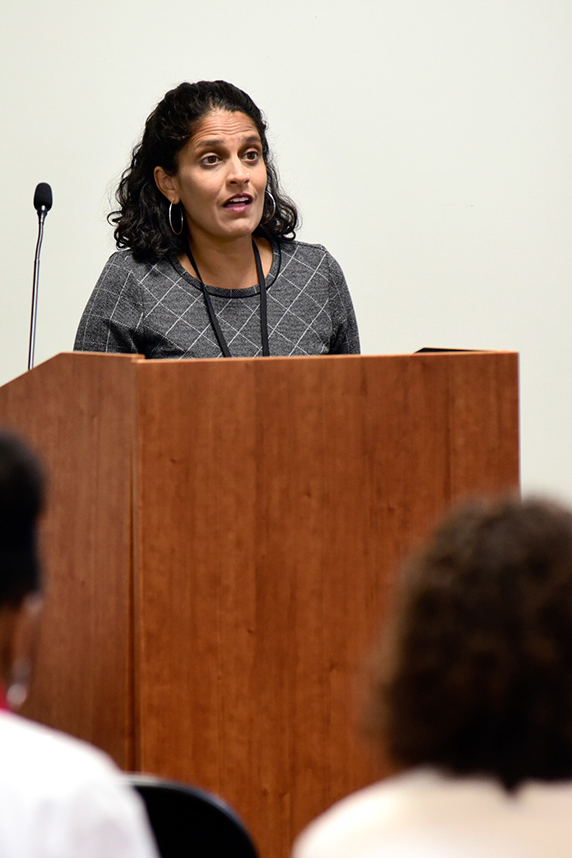 Zota said that diethylhexyl phthalate, which for a long time was the most common phthalate used, may be significantly associated with increased fibroid risk. (Photo courtesy of Steve McCaw)
Zota said that diethylhexyl phthalate, which for a long time was the most common phthalate used, may be significantly associated with increased fibroid risk. (Photo courtesy of Steve McCaw)Her finding that phthalate exposure via beauty products was more than 30% higher in black women was consistent with national studies. Black women are also more likely to have larger fibroids, experience severe symptoms, and undergo surgery.
“It suggests the need to look at social-environmental interactions and move beyond conceptualizing race as a solely biological factor in fibroid studies,” said Zota.
Lasting connections
At the end of the symposium, participants discussed themes that emerged throughout the day, highlighting potential areas to focus future research and collaboration. Lillian Prince, an epidemiology student at the University of Illinois, said the event benefited her personally and professionally.
“I am a person who has suffered from fibroids, and I know many, many women who have suffered as well,” said Prince, who presented a poster on her plans to study the prevalence of uterine fibroids and vitamin D deficiencies in Kenyan women. “I think what we are doing here is beneficial, and I am glad to have the opportunity to stay connected.”
Citations:
Cook H, Ezzati M, Segars J, McCarthy D. 2014. The impact of uterine leiomyomas on reproductive outcomes. Minerva Ginecol 62(3):225−236.
Fuldeore MJ, Soliman AM. 2017. Patient-reported prevalence and symptomatic burden of uterine fibroids among women in the United States: findings from a cross-sectional survey analysis. Int J Womens Health 9:403–411.
Flake GP, Moore AB, Sutton D, Flagler N, Clayton N, Kissling GE, Hall BW, Horton J, Walmer D, Robboy SJ, Dixon D. 2018. The life cycle of the uterine fibroid myocyte. Curr Obstet Gynecol Rep 7(2):97−105.
Zota AR, Geller RJ, Calafat AM, Marfori CQ, Baccarelli AA, Moawad GN. 2019. Phthalates exposure and uterine fibroid burden among women undergoing surgical treatment for fibroids: a preliminary study. Fertil Steril 111(1):112−121.
Eltoukhi HM, Modi MN, Weston M, Armstrong AY, Stewart EA. 2014. The health disparities of uterine fibroid tumors for African American women: a public health issue. Am J Obstet Gynecol 210(3):194−199.
(Marla Broadfoot, Ph.D., is a contract writer for the NIEHS Office of Communications and Public Liaison.)





